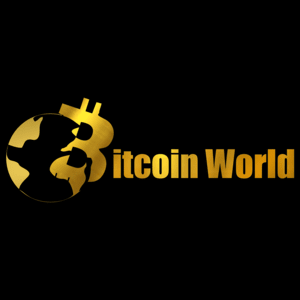Stablecoin Market Set for Massive Growth: Citi Report Projects $3.7 Trillion by 2030
5 min read
Imagine a world where digital currencies are not just volatile assets for speculation, but stable, reliable forms of money used for everyday transactions, cross-border payments, and powering the future of finance. According to a groundbreaking report from the Citi Institute, this future is closer than you think, with the stablecoin market poised for potentially massive growth. What is Driving Stablecoin Market Growth? The recent Citi stablecoin report paints a picture of a digital financial landscape rapidly evolving. At the heart of this evolution are stablecoins – cryptocurrencies designed to minimize price volatility, typically by pegging their value to a stable asset like the U.S. dollar, a commodity, or a basket of assets. But why are they gaining such traction? Several factors contribute to the burgeoning stablecoin market : Bridging Traditional Finance and Crypto: Stablecoins act as a crucial on-ramp and off-ramp between the volatile crypto world and the traditional financial system. Global Payments & Remittances: They offer a potentially faster, cheaper, and more efficient way to send money across borders compared to traditional methods. DeFi (Decentralized Finance): Stablecoins are the backbone of many DeFi protocols, providing stability within lending, borrowing, and trading platforms. Hedging Volatility: Traders use stablecoins to protect gains or park funds during periods of high market volatility without leaving the crypto ecosystem entirely. Institutional Interest: As regulatory clarity improves and infrastructure develops, more financial institutions are exploring stablecoin use cases. Key Findings from the Citi Stablecoin Report The Citi Institute’s Blockchain & Digital Dollar report offers a compelling outlook. The most striking projection is the potential scale of the stablecoin market , estimating it could grow to anywhere between a substantial $0.5 trillion and a staggering $3.7 trillion by the year 2030. To put that into perspective, the current market cap is significantly less, highlighting the immense growth potential seen by financial giants like Citi. Here are some core takeaways from the report, as highlighted by Wu Blockchain: Massive Market Expansion: The headline figure of up to $3.7 trillion indicates confidence in the widespread adoption of stablecoins. USD Dominance: A significant portion – around 90% – of this projected market is expected to be denominated in U.S. dollars. This underscores the dollar’s continued importance in the global digital economy. Stablecoin Issuers as Treasury Holders: With trillions of dollars backing stablecoins, issuers are expected to become major holders of U.S. Treasuries. This has potential implications for the traditional bond market and monetary policy. Public Sector Interest in Blockchain: Beyond stablecoins, the report notes rising interest from governments and public bodies in leveraging blockchain technology . The Role of Blockchain Technology in This Evolution The growth of the stablecoin market is inextricably linked to advancements in blockchain technology . Blockchains provide the underlying infrastructure for issuing, managing, and transferring stablecoins securely and transparently. The report’s mention of public sector interest in blockchain further emphasizes its potential beyond just cryptocurrencies. Governments are exploring blockchain for various use cases to enhance transparency and efficiency, including: Government Spending: Tracking how public funds are allocated and spent. Subsidies and Aid Distribution: Ensuring aid reaches intended recipients directly and transparently. Record Management: Creating immutable and verifiable records for land registries, identity management, and more. This broader adoption of blockchain technology by the public sector could further legitimize and accelerate the adoption of digital assets like stablecoins. Implications for Digital Finance and Beyond A multi-trillion dollar stablecoin market has profound implications for the future of digital finance . It suggests a world where digital assets play a central role not just in investment portfolios, but in everyday commerce and global financial flows. This growth trajectory indicates a potential convergence between traditional financial systems and the burgeoning digital asset space. The increased holding of U.S. Treasuries by stablecoin issuers could also impact liquidity and demand in the traditional bond market. Furthermore, the rise of dollar-denominated stablecoins reinforces the U.S. dollar’s position in the digital era, potentially competing with or complementing central bank digital currencies (CBDCs). Understanding the Broader Crypto Market Growth While stablecoins are designed for stability, their projected growth is a significant indicator of overall crypto market growth and maturation. The demand for stable, digital assets reflects increasing utility and integration into the wider economy. It suggests that the crypto ecosystem is moving beyond purely speculative trading towards practical applications in payments, finance, and governance. The infrastructure, regulatory frameworks, and user adoption needed to support a multi-trillion dollar stablecoin market will inevitably contribute to the broader development and acceptance of the entire crypto landscape. This forecast from a major financial institution like Citi provides a strong signal about the perceived long-term viability and expansion of the digital asset space. Challenges and the Road Ahead Despite the optimistic outlook, the path to a $3.7 trillion stablecoin market is not without hurdles. Key challenges include: Regulation: Regulatory uncertainty remains a major challenge globally. Clear and consistent rules around stablecoin reserves, issuance, and use are crucial for mass adoption. Reserve Transparency and Auditing: Ensuring that stablecoins are truly backed 1:1 by reserves and that these reserves are transparently audited is paramount for trust. Competition: The stablecoin landscape is competitive, with existing players and potential new entrants, including banks and tech companies. Technological Risks: Smart contract vulnerabilities and platform stability are ongoing concerns. Adoption Barriers: Educating the public and businesses, and building user-friendly interfaces are necessary for widespread use. Actionable Insights for Readers What does this mean for you? Whether you’re an investor, a business owner, or just curious about the future of money, here are some takeaways: Stay Informed: Keep an eye on regulatory developments surrounding stablecoins in your region. Understand the Use Cases: Explore how stablecoins are being used in DeFi, payments, and trading. Evaluate Risks: Understand the risks associated with different types of stablecoins and issuers. Watch for Institutional Adoption: Citi’s report is a signal; observe how other major financial players engage with stablecoins. Consider the Broader Impact: Think about how a large stablecoin market could influence traditional finance and global economics. Conclusion: A Glimpse into the Trillion-Dollar Stablecoin Future The projection from the Citi stablecoin report is more than just a number; it’s a vision of a future where digital finance , powered by blockchain technology and anchored by stablecoins, plays a central role in the global economy. The potential for the stablecoin market to reach trillions signifies not just crypto market growth , but a fundamental shift in how value is transferred and stored digitally. While challenges remain, the growing interest from both the private and public sectors, coupled with clear use cases, suggests that stablecoins are likely to become an increasingly important part of our financial lives in the coming years. Citi’s bold prediction serves as a powerful reminder that the digital transformation of finance is accelerating. To learn more about the latest crypto market trends, explore our article on key developments shaping digital finance institutional adoption.

Source: Bitcoin World



